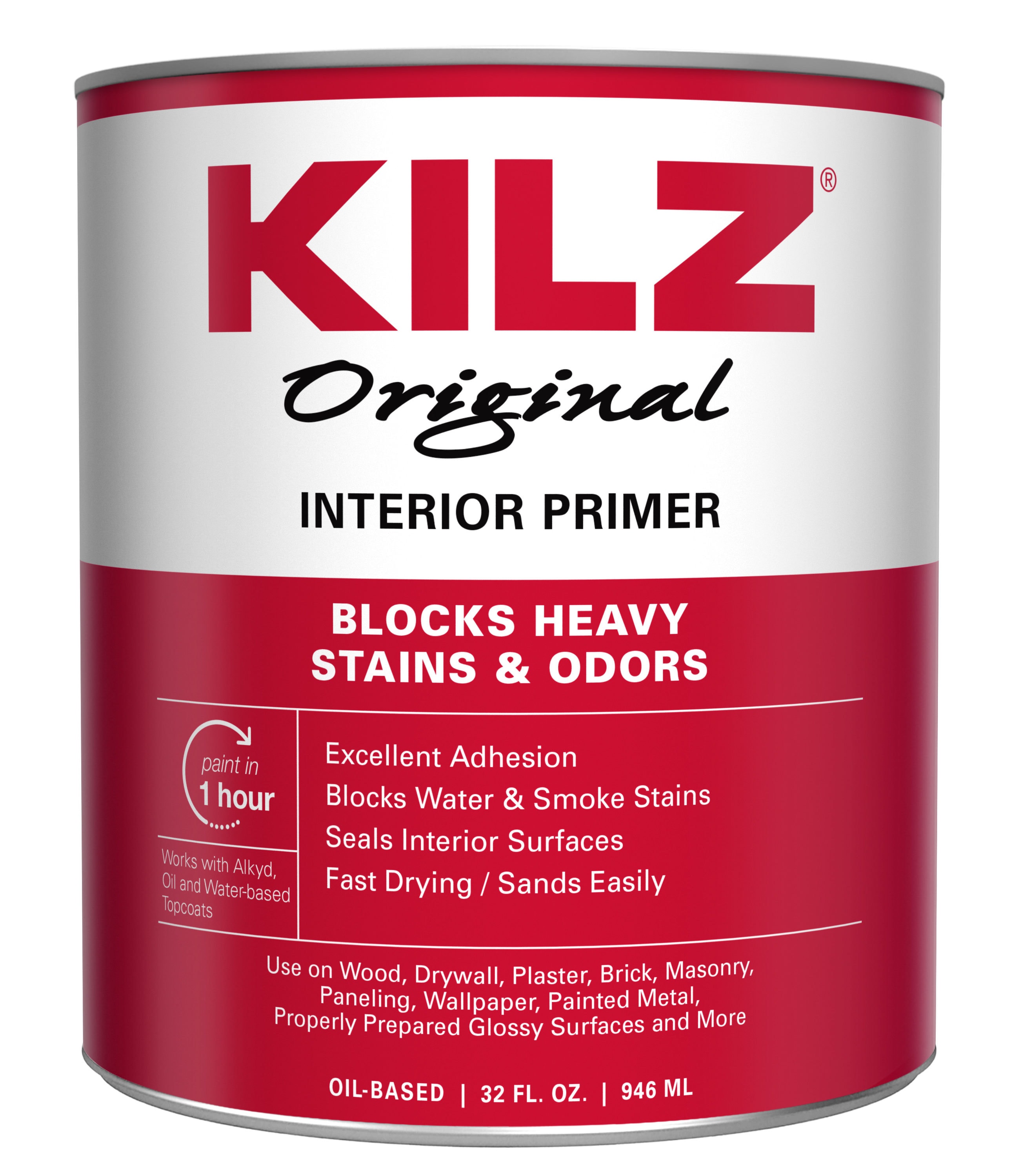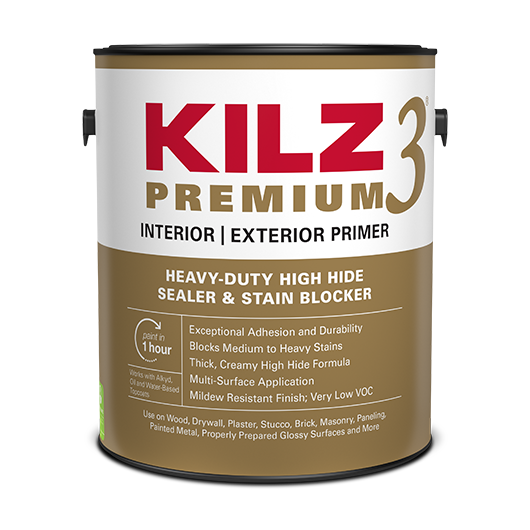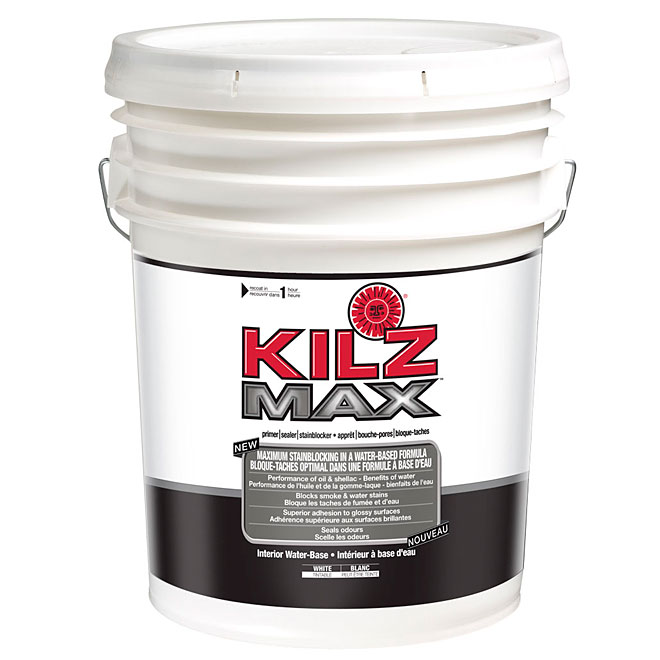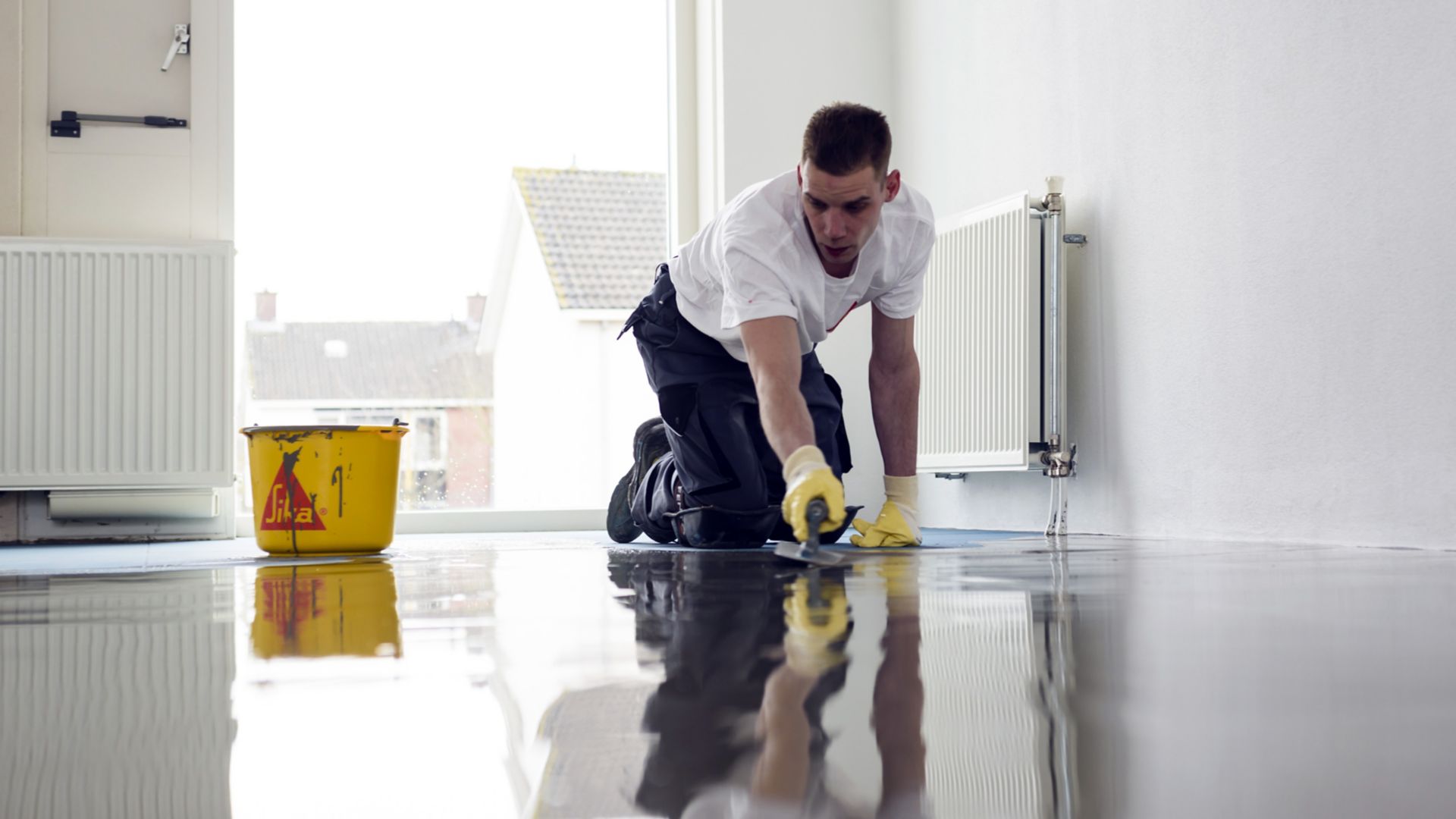Image Source: Sika GCC
The popular primer brand Kilz may be seen on walls, ceilings, and furniture alike. Its stain-resistant and paintable qualities make it a top choice for DIYers and contractors alike. However, Kilz is not a good choice as a primer for flooring. In fact, you shouldn’t use Kilz primer on your floor since it might damage the surface.
Primers designed to endure wear and tear from foot traffic, spills, and other forms of flooring abuse are necessary. The use of Kilz primer on flooring, which lacks these qualities, may cause a wide variety of issues. Kilz’s negative effects on flooring range from reduced durability to unattractive discolouration.
That’s why it’s so important to know why Kilz is not recommended for flooring: it has some serious drawbacks. This article will discuss why Kilz primer is not a good choice for priming floors, the risks associated with using Kilz primer on floors, and alternatives that are more appropriate. By the article’s conclusion, you will know why it’s crucial to choose the right primer for your floor and what could happen if you don’t.
What is Kilz Primer?
Surfaces may be prepared for painting using Kilz primer. It’s purpose is to prevent stains and seal porous surfaces so that new paint goes on evenly. Primers made by Kilz, whether oil-based or water-based, are well-known for their ability to mask even the most stubborn stains, including smoke, water damage, and pet smells.
Kilz primer comes in a variety of forms, each with its own set of desirable qualities and recommended applications. The original Kilz primer is an oil-based product that adheres well to many different substrates. Water-based Kilz 2 may be used over either primed or unprimed surfaces. It has a reputation for having a short drying time and little odor. Metal, vinyl, and shiny surfaces are no match for Kilz Max, a variant of the company’s popular primer. It’s long-lasting and adhesive, and it’s water-based.
Types of Kilz Primer Available in the Market
Different formulations of Kilz primer are designed to address different issues. Some of the most typical examples are as follows:
Kilz Original:

Image Source: Lowe’s
In order to avoid stains, dark hues, and tannin bleed, use the original Kilz priming recipe.
Kilz 2 Latex:

Image Source: The Paint Store
This primer is water-based, so it may be used inside or out. It dries quickly, has a little scent, and is simple to wash off with soap and water.
Kilz Premium:

Image Source: Kilz
High-quality porous materials like wood, brick, and drywall may benefit from this primer because of its water-based formula. You may use it inside or out thanks to its mildew-resistant coating.
Kilz Max:

Image Source: RONA
This primer, made from water, is resistant to strong scents and stains. It does a great job of eliminating smoking and pet pee smells.
Kilz Adhesion:

Image Source: Ubuy Philippines
Priming spray for use on tile, glass, vinyl, and other smooth, shiny surfaces. It works well with both oil and water-based paints and gives strong adherence.
Even though Kilz primer can be useful in some situations, it is not advised to be used on floors because of the damage and hazards it could cause.
Why is Kilz not recommended for flooring?
There are a number of reasons why you shouldn’t use Kilz primer on your floor. To begin with, the continual foot activity and wear and tear that flooring endures is not something that Kilz was made to handle. The flooring’s integrity might be jeopardized as a result of chipping, peeling, and diminished durability.
Second, Kilz primer might fade in bright sunlight, resulting in ugly streaks on the floor. Permanent stains are possible, and Kilz is notoriously hard to remove.
In addition, inhaling the VOCs included in Kilz primer may cause respiratory distress, headaches, and even more severe symptoms. Those who already struggle to breathe might be in grave risk.
Epoxy primers and other floor-specific primers are suggested because they create a strong connection with the floor and resist chipping and peeling. Low-volatile-organic-compound (VOC) latex and acrylic primers made for heavily-traveled locations are another option.
As a result of its incompatibility with high-traffic areas, its tendency to discolor, and the health hazards connected with VOCs, Kilz primer is not suggested for flooring. Primers made for flooring alone are available, and they provide the floor a finish that lasts.
What are the consequences of using Kilz on flooring?
Several issues can arise if Kilz primer is used on flooring, all of which can be detrimental to the building’s structural soundness, visual appeal, and market value. If you want a long-lasting, high-quality finish on your floor, you should use primers made for floors.
Decreased longevity:
Kilz is not built to resist the abuse of flooring, such as the weight of people walking on it and the spills that always occur. The flooring’s integrity might be jeopardized as a result of chipping, peeling, and decreased durability.
Discoloration:
Over time, Kilz primer can fade, especially if it is exposed to sunlight. This may cause the flooring to become stained and ugly, giving the impression that it is ancient and worn.
Trouble in sanitizing:
The stains left by Kilz priming may be tough to remove and may even be permanent. The flooring may end up looking unattractive and lose some of its charm as a result.
Health risks:
Inhaling the primer’s volatile organic compounds (VOCs) from Kilz may be dangerous. In addition to aggravating preexisting respiratory disorders, these VOCs may also lead to headaches and other symptoms in otherwise healthy people.
Diminished worth:
Using Kilz primer on your floor might lower your home’s resale value. Because it may cause the flooring to become less durable, discolored, and ugly, reducing its resale or rental value.
What are the alternatives to Kilz for priming floors?
Several other primers work just as well as Kilz primer when priming floors. Some of the most popular are listed below:
Zinsser Bulls Eye 1-2-3:
This primer is water-based, making it suitable for both concrete and timber flooring. It’s simple to use, dries rapidly, and forms a solid base for the topcoat. On the other hand, badly soiled flooring could not benefit from its usage.
Rust-Oleum Zinsser Fast Prime 2:
This primer dries quickly and may be used on a variety of flooring types including concrete, wood, and tile. It’s great for high-traffic areas because of its stain-blocking and adhesive characteristics. However, it has a powerful odor and must be applied in an area with adequate ventilation.
Benjamin Moore Fresh Start Multi-Purpose Primer:
This primer is water-based and low in volatile organic compounds, making it ideal for use on floors both indoors and out. It’s simple to use and delivers superior adhesion, stain resistance, and sealing. On the other hand, badly soiled flooring could not benefit from its usage.
Frequently Asked Questions: FAQs
Is Kilz primer suitable for use on concrete slabs?
Although Kilz primer can be used on concrete floors, doing so is not advised due to the damage and hazards it can cause.
Why is it a good idea to use a primer before applying flooring?
Priming a floor before painting or applying another finish may increase the durability of the final product, cover up flaws, and create a smooth surface.
How can I best get my floor ready to be primed?
Cleaning and sanding the flooring surface, removing any dust or debris, and waiting for it to dry completely are all necessary steps before applying primer.
Is Kilz primer suitable for hiding pet pee stains on flooring?
Kilz Max may be able to prevent serious stains and smells, but it shouldn’t be used on floors because of the damage and risks it might cause.
Is a primer required before painting or repairing flooring?
Although it’s not always required, priming your floor before installing it can help to ensure a higher quality finish and longer life. Find out whether a primer is required for your flooring job by consulting a professional or the manufacturer’s guidelines.
Final Words
In conclusion, owing to the possibility for damage and risks, the use of Kilz primer on flooring is not advised. Kilz primer contains chemicals that may damage floor surfaces by discoloring, cracking, and peeling them.
The emission of volatile organic compounds (VOCs) also poses risks to human health. To get the finest results and prevent any problems, it’s preferable to use a primer made particularly for flooring, such as Zinsser Bulls Eye 1-2-3 or KILZ 2 Latex primer. Cleaning, sanding, and waiting for the flooring to dry completely before applying primer are other crucial steps. In general, a beautiful and long-lasting floor finish can only be achieved by using the appropriate primer for the task at hand.
Thirsty for more ideas and related articles? Read these pieces below:
Written By: Trisha Mae Raymundo


